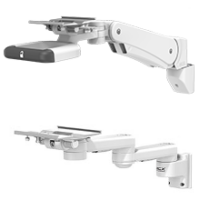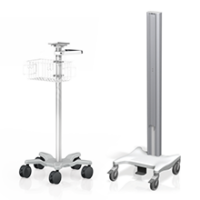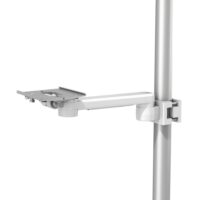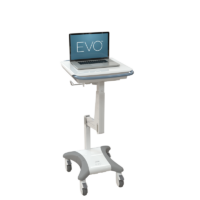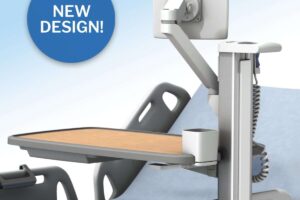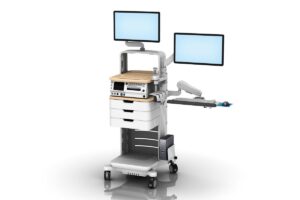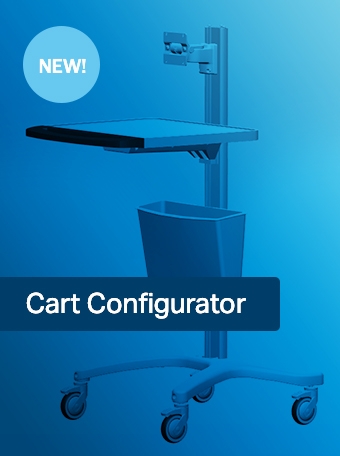
-
支持
-
关于 GCX
- 联系我们
- 选择语言
Every medical device manufacturer must meet minimum safety standards to launch a new product. However, for that product to be successful and stand up to the demanding nature of healthcare environments, it often must exceed these minimum standards. At GCX, we understand this. That’s why we not only conduct comprehensive testing to ensure the quality of our products (designed for both hospitals and medical device manufacturers), but also validate the function of the mounting solution for a new product’s overall success in healthcare settings.
Going (well) beyond the standard
A medical device manufacturer can’t expect its engineers to fully understand the user perspective with respect to mounting solutions, or to stay current on all IEC standard amendments and updates. But we can—and do. We also have the know-how to apply the written standards to the mounting solution, which is not a simple task. It is important to note, however, that safety standards don’t necessarily speak to other important factors like functionality.
With almost 50 years of experience working directly with hospitals, GCX staff has a deep understanding of the practical applications for medical equipment and the mounts to support them. In addition to applying our wealth of expertise, GCX also offers the following testing capabilities to ensure each product meets healthcare providers’ expectations. They include:
Load tests. At a minimum, our engineers design to meet static loading requirements in accordance with IEC 60601-1 3rd edition safety factors. We also have the experience to know when these minimum requirements may not be enough to satisfy the durability customers expect from GCX products. We use this knowledge to benefit custom designs for our OEM customers.
Lifecycle tests. We generally design and test to a 10-year use period in a busy hospital setting, which amounts to at least 30,000 cycles of joint motion (using various motions like linear up and down, left to right rotation and tilt) for variable height arms, articulating arm, carts, workstations, tables or roll stands. We employ engineering confidence testing with automated equipment for early discovery and resolution of issues. As a result, we enter production verification testing with confidence.
Chemical compatibility tests. We employ a wipe test protocol on all product surface materials using a range of cleaning agents to make sure surfaces hold up to heavy use. Healthcare providers follow rigorous sanitation protocols for infection control. The harsh agents and frequency of their use can degrade surfaces if they were not designed for the medical environment. We test everything from proprietary wipes, alcohol and bleach solutions to commercial products like Lysol disinfectant and Windex glass cleaner. Our chemical test protocol is constantly evolving as new disinfectants are used by hospitals.
Validation and real life. Published test standards cannot cover every possible failure mode, so we run new products through their paces in an environment as close to ‘real life’ as possible. This may uncover issues around cable clearance, fit and range of motion for commonly-used accessories, response to user pulling or leaning forces, just to name a few. These common-sense tests happen within our risk management process to ensure everything functions safely and properly under all foreseeable conditions.
IEC stability tests (e.g. tip tests). We verify the safety of mobile carts, workstations, roll stands and anesthesia machines that hold a myriad of medical equipment that could make balance an issue. We are experts when it comes to highly configured anesthesia machines and use the many machines and medical devices we have onsite in our test lab to simulate and validate any application. We’ll conduct tip testing, threshold testing, etc. to ensure everything is both properly mounted and in compliance with IEC 60601-1 3rd edition. (You can learn more here.)
Other product tests. We coordinate with and supervise outside testing labs when we don’t have the internal capabilities, such as shock, vibe, and environmental testing. These stress tests make sure both product and packaging hold up against extremes of heat, cold, humidity and rough handling, and use.
Want more? Find a list of our certifications here.
Leveraging our wealth of experience
With any project, we conduct analyses during product development to ensure both device function and the complete mounting solution meets buyers’ expectations for infection control, reliability, durability and stability. Done early in the design stage, these product evaluations can prevent companies from more expensive fixes later in the production schedule or after it’s gone to market.
Engaging with us early in your design process will safeguard your product from failing in the market due to misunderstanding of the healthcare environment. We can also guide you towards material and manufacturing decisions that support your overall budget, timeline and logistics model.
In the process of designing a new medical device? Contact us today to partner with the world-wide healthcare mounting solutions expert.
Recent Blog Posts
- Bring IT 13 12 月, 2023
- Everything within Arm’s Reach: Fetal Monitoring Workstations Nurses Love 11 8 月, 2023
- Ready to Move on from Wooden Carts? 16 5 月, 2023
- A GCX Superpower: Knowing How to Save You Time 19 1 月, 2023
- Configuring Anesthesia Workstations for Safe, Long-Term Usage 8 11 月, 2022




















